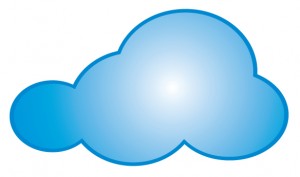 As I’ve written about in my last two books, technology choice has exploded. In the mid-1990s, organizations had relatively few choices compared to today with respect to purchasing and deploying enterprise systems. To be sure, technically speaking, cloud computing existed. However, it was not widely used for a number of reasons:
As I’ve written about in my last two books, technology choice has exploded. In the mid-1990s, organizations had relatively few choices compared to today with respect to purchasing and deploying enterprise systems. To be sure, technically speaking, cloud computing existed. However, it was not widely used for a number of reasons:
- Broadband was not the exception, not the rule. As such, it was much more expensive.
- Storage was still costly. You could not easily make large files available. That’s why AOL sent you those free CDs.
- The Internet had not yet reached critical mass.
Add these all up and it should be no surprise that software vendors offering cloud-based solutions were few and far between. On-premise software vendors such as SAP, Oracle, PeopleSoft, and their ilk sold large ERP and CRM packages to organizations that finally realized that their legacy mainframe applications were quickly outliving their usefulness.
Options Abound
Fast forward to today. Yes, large organizations can still buy expensive enterprise systems and host them internally. However, for two reasons, this is becoming the exception rather than the rule. For one, consider the simple math: most big companies years ago implemented these types of systems. Today, there just aren’t too many hospitals or Fortune 500 companies that continue to run homegrown inventory, payroll, and accounting systems off of old mainframes. (Of course, whether these organizations’ current systems meet changing business needs and evolving regulatory requirements is another matter entirely.)
Second, even large organizations in need of major systems’ overhauls are unlikely to purchase traditional on-premise software–and run it internally. Broadband is now pervasive, storage is cheap, and many vendors embrace cloud computing and the freemium model.
Brass tacks: In recent years, the number of technology alternatives for companies of all sizes has grown exponentially. Through Software as a Service (SaaS), organizations can transform traditional capital expenditures (read: massive software purchases) into much more digestible operational expenditures. For example, a former $1M USD purchase (plus consulting services and annual support) may become a $20,000 monthly expense–based upon transactions or licenses.
Generally speaking, the math here makes SaaS and cloud-based applications a no-brainer. It doesn’t take an MBA to realize that a controllable monthly expenses give organizations much more flexibility in any economy, much less one still reeling from the burst of the real estate bubble.
Jean-Michel Bérard makes this point in “SaaS brings big-company efficiency to document delivery”, Bérard writes:
SaaS shifts the expense of the solution from capital to operational, clearing away the barrier of acquisition and deployment cost, and there is no software or hardware to maintain. Small and medium-sized businesses (SMBs) can significantly shorten transaction cycles, increase productivity, reduce Days Sales Outstanding (DSO) rates, increase visibility and process control while focusing resources on core competencies and customer service rather than supporting technology.
Bérard is absolutely right, though I’d add that SMBs are far from the only types of companies thatbenefit from shorter development cycles. Particularly when the adopt agile methods, large organizations can realize significant benefits from SaaS as well.
This is post sponsored by the Enterprise CIO Forum and HP.

 PHIL SIMON
PHIL SIMON


Three challenges with SaaS for application modernization: 1.) Integration with existing systems, other apps, etc (great Linthicum blog on topic); 2.) Customization; 3.) Mobile optimization (for presentation in the BYOC era). As for benefits, there is a lot of talk about “embedding IT” into the business. While this typically refers to staffing and perspective, there is no better way to integrate into the business process than with an agile app, potentially provided as SaaS.
—Paul Calento
(note: I work on projects sponsored by EnterpriseCIOForum.com and HP)